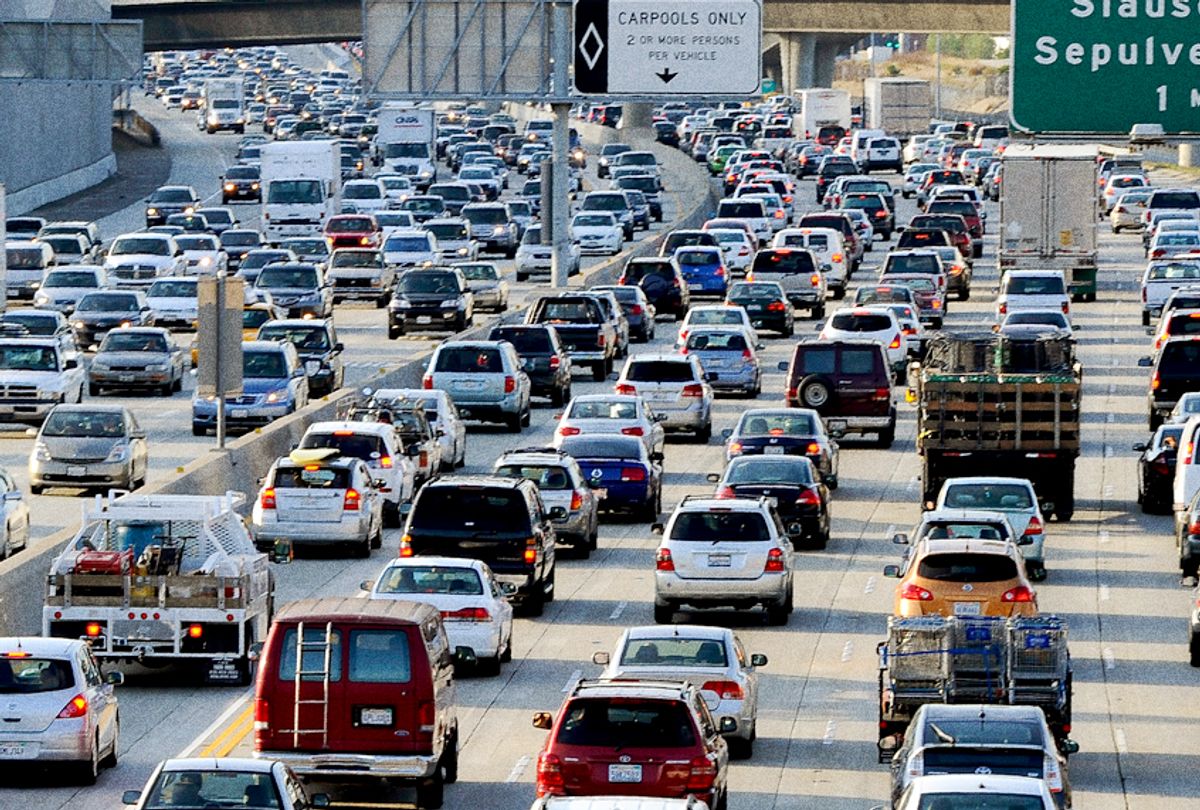Just a week into the new year, and the first estimate of how much planet-cooking pollution the United States belched into the atmosphere last year is already in. It’s not the kind of report card you’d be proud to show your parents, but at least it won’t leave you in tears.
Perhaps surprisingly, total emissions fell 2 percent compared with the year before, according to the Rhodium Group, a research firm that frequently crunches climate numbers. The reason for that decline? The U.S. is burning less coal. That’s been driving down emissions from electricity generation. But the way we get around, heat our homes, and manufacture our stuff, hasn’t had much of an effect.
“It’s a good-news bad-news story,” said Trevor Houser, a partner at Rhodium and author of the report. “In the electricity sector we had a banner year — we had the largest decline in coal generation in recorded history. But in the other 75 percent of the economy, emissions remain stubbornly flat.”
Coal has been in a slow-motion death spiral over the past ten years. The country now generates half as much coal-fired electricity as it did in 2009. And that trend continued through last year, as coal generation slid 18 percent.

(Credit: Clayton Aldern / Grist)
Surging natural gas was the biggest reason for coal’s demise. Gas comes with its own problems for the climate– burning it releases carbon, and leaks release methane — but replacing coal with gas led to a decline in globe-warming gases, Houser said. Renewable energy from hydroelectricity, solar power, and wind turbines, increased 6 percent in 2019. So despite President Donald Trump’s vows to resurrect coal, it’s still sliding into history.
The same can’t be said of gas-powered cars and gas-fired furnaces — for the moment, those look locked in.

(Credit: Clayton Aldern / Grist)
Cleaning up the electrical grid is a great first step to cleaning up other sectors. With enough low-carbon electricity, more people could drive electric cars and ride electric trains. Builders could start installing electric heat pumps rather than gas furnaces in houses. “But that’s not going to happen on its own,” Hauser said.
Nudging people toward clean electricity requires policy: Efficiency standards, building codes, incentives, and taxes. Some state and local governments are making these changes, but at the federal level, the Trump administration is doing its best to stop them. As a result, the country’s energy use seems to have its own laws of motion. It takes a lot of work to change direction, but it’s relatively easy to let things keep running as normal. You can see that in coal’s continued slide, as well as in the status quo in emissions from factories, cars, and buildings.



Shares